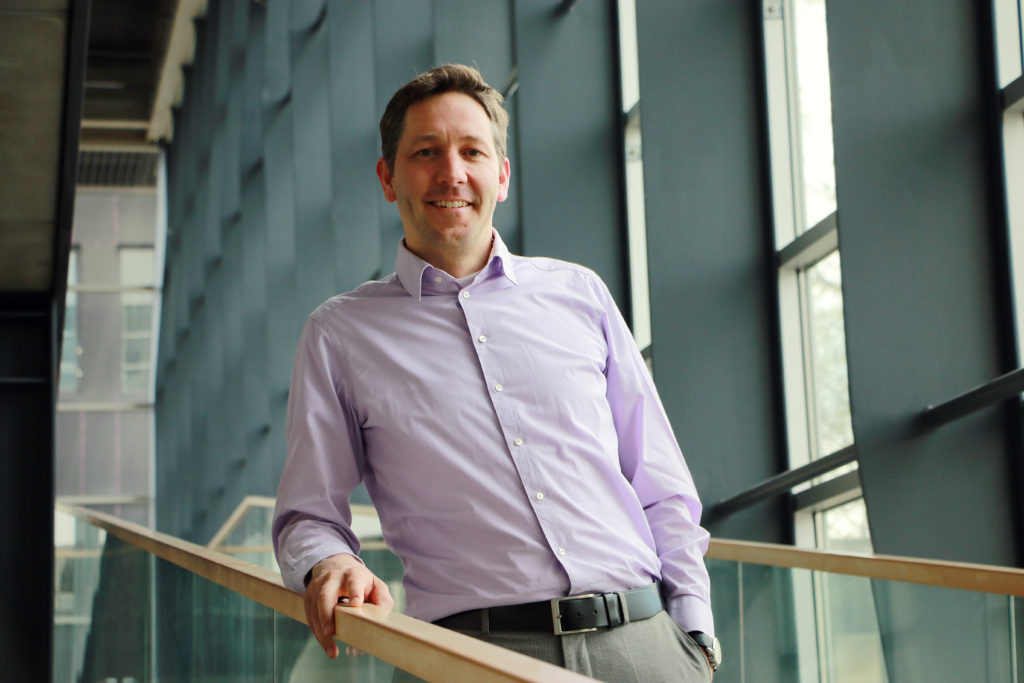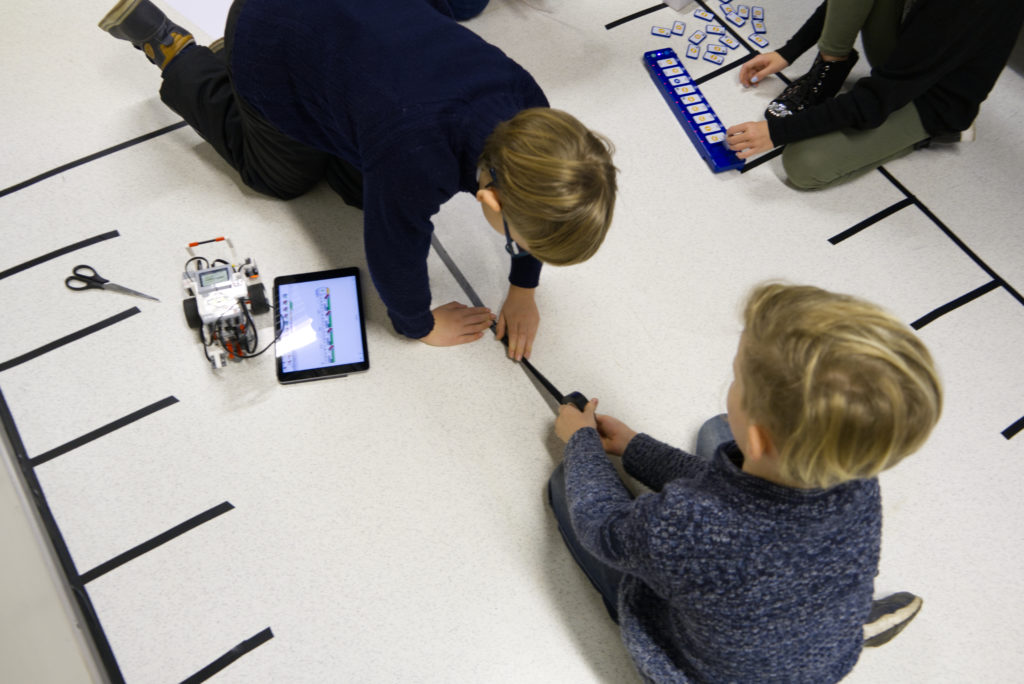Tallinn University scientists are exploring new ways of learning in the digital age; passive listening doesn’t bring the best results, they say.
This article is published in collaboration with Research in Estonia.
Spending a day in a conference room with many coffee breaks and endless presentations. Sounds like a typical training day? Even in schools, we are usually expected to sit quietly and listen, but is this really the best way to learn?
A research group from Tallinn University can now say that passive listening doesn’t bring the best results. Especially when the aim of the training is to apply new technologies, which is often the case nowadays.
For the past 16 years, learning analytics and educational innovation professor Tobias Ley together with his international team researched the best way to teach people. His working group started by looking at what happens in workplaces. They helped German construction workers use a video programme to support learning on the work site and integrated an information-sharing platform into British health-care workers’ everyday work. These experiences helped them see that the best learning happened during the work process. They also saw the importance of learning in groups.

Using data, robots and apps at schools
Since 2015, Ley’s research focus shifted to Estonian schools.
Estonian teachers are generally curious and interested in experimenting with new ideas. And they have something in common with entrepreneurs. They, too, need to figure out how technology could improve their work.
Most Estonian schools have robotic kits, iPads, fully equipped computer classes, 3D printers. They have the newest tech, but does it bring the extra value?
Kairit Tammets, the head of the Centre for Educational Technology and part of the Tallinn University research team, began by observing how teachers used digital materials in the first place. The research group discovered that the educators didn’t know how to make the best use of technology in their work. Gadgets were often used to replace the old methods and they didn’t give additional value for the students.
Making learning more sustainable, scalable and evidence based
The scientists developed a model called Edulab to make learning more sustainable, scalable and evidence based. In their programme, Teacher Innovation Labs, secondary school math teachers learn to use robots in math lessons, smartphones in outdoor activities and make the most of other digital resources.
Students are encouraged to create tasks for themselves. They watch videos at home to learn the basics about a certain topic and use time in the classroom to discuss and create new knowledge together with other students. The teacher’s role is to make sure everyone understands the concepts and to support students in applying the knowledge in different situations.

Data lies in the centre of it all. The lab monitors activities in the digital platforms, then gathers and analyses the data. Teachers are also prepared to use data to monitor and observe the class and find out what topics the pupils struggle with the most.
Good solutions and practices are created together
More than 200 teachers and 2,000 students have been involved in Edulab activities. In 2020, the team received the most prestigious Estonian Science Award for this research.
“18 years ago, when I started teaching math, my students were using textbooks and pens,” Veronika Grigorjev, a math teacher in Põlva, a small town in southeastern Estonia, said. “Now they take their iPads or phones out and get much more done!” Grigorjev sees how her pupils have really started understanding math. “They are making associations, not just learning formulas for each test.”
What makes Tallinn University’s approach unique in the world is the tight cooperation between schools and the research group, and the way the scientists make use of data.
What the researchers learned from observing the classrooms could easily be transferred to the office environment. For instance, it’s not enough to hand a new programme to employees and hope they will start to use it efficiently. Any innovation in an enterprise needs co-creation. Good solutions and practices are created together, because change doesn’t happen from the top down.
Trusting makes all the difference
So why is Estonia doing so well in innovating the way we learn? Estonians trust technology more than most other nations. This is partly the reason Estonia has been so successful with the digital government solutions to begin with. For instance, Estonia is the first country in the world to let their citizens vote online.
As it turns out, the same trust can bring a rapid change in schools. Innovation is happening, because students and teachers are willing to use technology and they agree to give their data to researchers – as long as data protection regulations are followed, of course.

Professor Ley, originally from Germany, spent a decade working in Austria and now resides in Tallinn. He believes Estonia’s long tradition of prioritising education plays an important role. Even kindergarten teachers are academically trained in Estonia. It’s also easy to experiment in this small country. Estonian teachers have the freedom to decide what to do in their classrooms, which makes them more motivated to test and try new things. Almost all Estonian schools, in some form or another, have hired educational technologists, who are responsible for adopting new methods, gadgets and ideas in classrooms.
“Technology supports and enables people, not the other way around,” Merja Bauters, a professor of digital transformation, added. She moved from Aalto University in Finland to Tallinn University and is part of the research team with Ley and Tammets. She shares her advice based on what they’ve learnt so far when researching enterprises: “To help people learn together, build empathy and trust, and pay attention to data.”
Scientists can support companies to change and become more aware of their potential, especially at times when green consumerism is on the rise. Not all companies strive for mere profit and growth anymore. The new values are transforming everything, including the practices at work.
Learning is crucial to stay on top, but only if you do it together, and have fun with it.
Cover: Children are not just allowed to play with iPads in Estonian schools, they are expected to. Photo by Margit Sellik.

